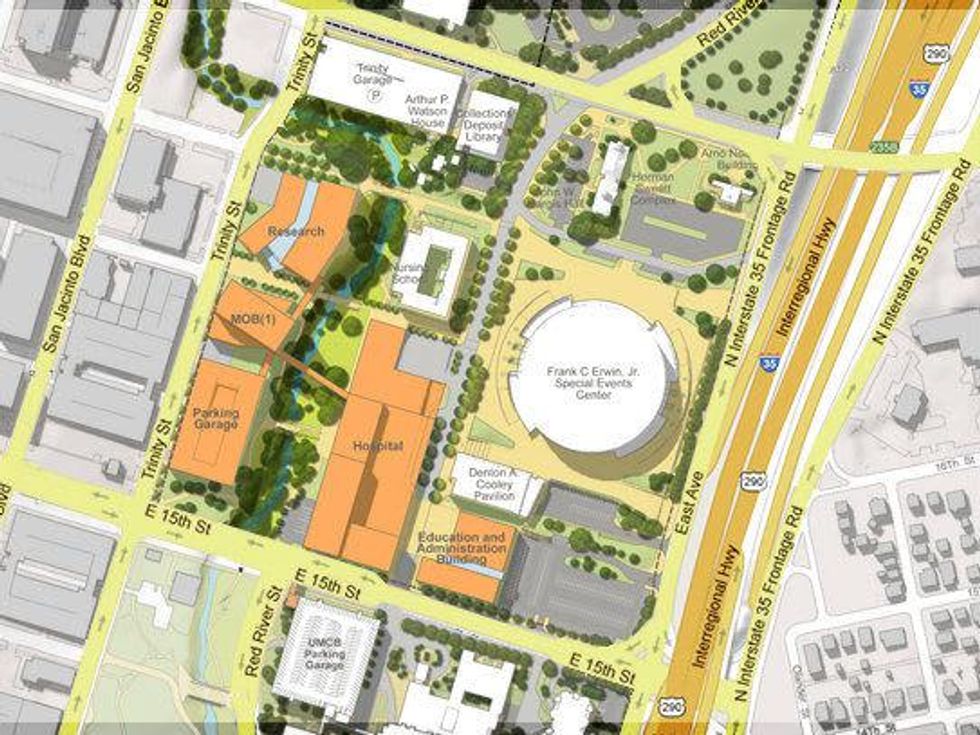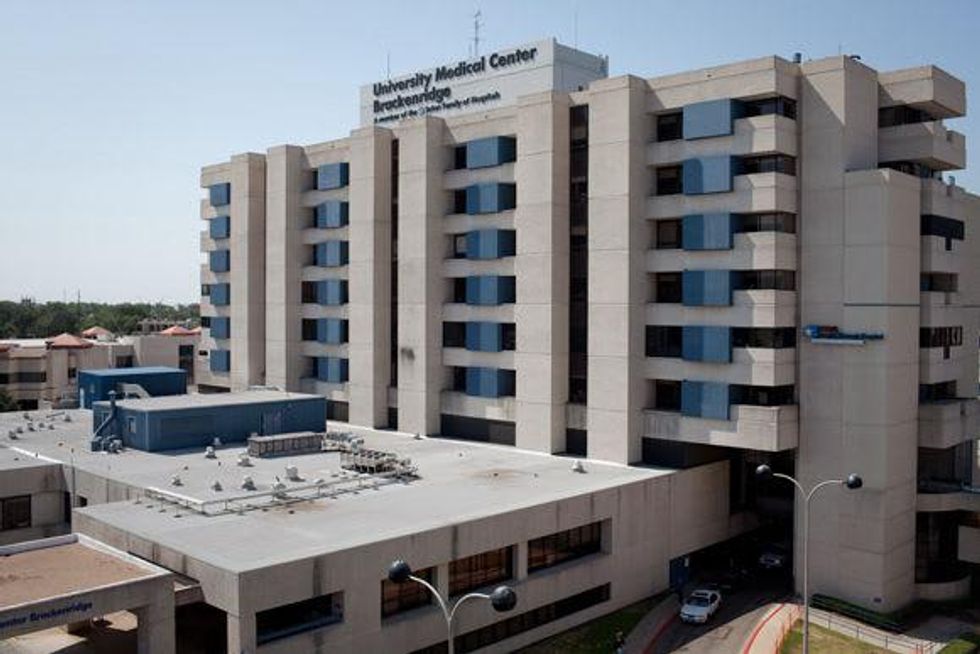Higher Education
Construction of Seton's state of the art teaching hospital approved at UT, project architect announced
Central Texas medical professionals celebrated the dawn of a new era on Tuesday morning, atop of the Brackenridge Hospital parking garage, where a press conference was held by Seton Healthcare Family to announce the approval by its parent company, Ascension Health, to build a new teaching hospital to replace Brackenridge.
Senator Kirk Watson addressed the crowd, complimenting the voting public for choosing to raise taxes on themselves in November 2012 in order to make plans for the Dell Medical School at the University of Texas at Austin a reality. Seton's new teaching hospital will be the centerpiece of the Dell Medical School, which will accept its first class in 2016.
The teaching hospital comes as a partnership between three organizations: Seton Healthcare Family, Central Health (Travis county's health care district), and the UT Systems. Seton, also home to The University of Texas Southwestern Medical Center's Austin medical residency programs and Seton/UTSW Clinical Research Institute, will invest $245 million in building the hospital.
"Seton has a track record for opening hospitals on time and within budget," said Charles Barnett, executive board chair of Seton Healthcare Family Board of Trustees. "What [the three organizations] have done individually is impressive, but what we will be able to do collectively will be transformational," he continued.
“The new medical school campus will be part of our academic campus, and this will be a powerful connection,” said UT President Bill Powers. “Our medical students will be walking distance from some of the most innovative research in the world — not only in medicine but in pharmacy, chemistry, medical business systems and biomedical engineering."
Dallas-based architecture firm HKS, Inc was selected to lead the project, presumably based on the firm's vast experience in designing and developing childrens hospitals, emergency departments, cancer centers and other medical programs.
UT reported in May that "construction plans would not require removal of the Erwin Center, but a long-term proposal calls for the relocation of the venue in six to 15 years. Phase I would require the replacement of the Penick-Allison Tennis Center. The university's Athletics Department will manage the relocation of the facility."
There are no current plans to demolish Brackenridge Hospital. It will continue to function until the new teaching hospital is built and plans are made to move operations there. After the move, the Brackenridge may be repurposed for other uses yet to be determined.


